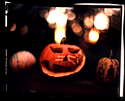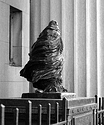Q.G.
Member
Rodinal is/was also very versatile. It would be able to 'do something good' with any film available, in many different ways.
So i don't think there is a single answer to how it is excellent, or what exactly is excellent about it.
And let's not beat about the bush and instead just openly admit that it was extremely popular too because it was cheap.
That alone (well... together with the unending shelf life) made it very popular.
(Yet, i haven't used Rodinal since, what?, the late 1970s, early 1980s. But i have a bottle now, and plan to start having fun with it soon. Never tried it on TMax, and that being my staple B&W film, i like what you say, Ian!)
So i don't think there is a single answer to how it is excellent, or what exactly is excellent about it.
And let's not beat about the bush and instead just openly admit that it was extremely popular too because it was cheap.

That alone (well... together with the unending shelf life) made it very popular.
(Yet, i haven't used Rodinal since, what?, the late 1970s, early 1980s. But i have a bottle now, and plan to start having fun with it soon. Never tried it on TMax, and that being my staple B&W film, i like what you say, Ian!)







